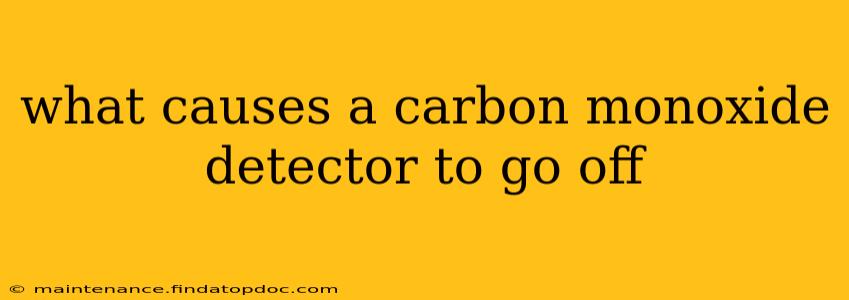What Causes a Carbon Monoxide Detector to Go Off?
A carbon monoxide (CO) detector going off is a serious event, demanding immediate action. Understanding the potential causes is crucial for ensuring your safety and preventing future incidents. While a faulty detector is a possibility, the most common reasons for activation stem from the presence of carbon monoxide itself, which is an invisible, odorless, and deadly gas.
Here's a breakdown of the most frequent culprits:
1. Faulty Appliances Burning Fuel:
This is the most common cause. Any appliance that burns fuel – gas, oil, propane, wood – can potentially leak carbon monoxide if not properly maintained or if there's a malfunction. This includes:
- Furnaces: Cracks in the heat exchanger or a blocked flue can allow CO to escape into your home. Regular inspections and professional servicing are vital.
- Water Heaters: Similar to furnaces, malfunctioning water heaters can release dangerous levels of CO. A yearly inspection is recommended.
- Gas Stoves and Ovens: While less frequent, gas leaks or incomplete combustion in stoves and ovens can also produce CO. Keep these appliances clean and ensure proper ventilation.
- Fireplaces and Wood-Burning Stoves: Improper ventilation or a blocked chimney can lead to CO buildup. Ensure your chimney is regularly cleaned and inspected.
- Gas Generators: Never operate a gas generator indoors or in an enclosed space. These produce high levels of CO.
- Cars: Running a car in an attached garage, even with the door slightly open, can quickly fill your home with deadly CO fumes.
2. Blocked Vents or Chimneys:
Proper ventilation is crucial for safely burning fuel. Blocked vents or chimneys prevent the exhaust gases, including CO, from escaping, leading to a buildup inside your home. Leaves, nests, or snow can all obstruct vents. Regular cleaning is essential.
3. Improperly Installed Appliances:
If appliances aren't installed correctly, they might not vent CO properly, resulting in dangerous levels accumulating in your home. Always use a qualified professional for the installation of gas appliances.
4. Low Oxygen Levels:
In some cases, incomplete combustion due to insufficient oxygen can increase CO production. Ensure adequate ventilation in areas where fuel-burning appliances are located.
5. Backdrafting:
Backdrafting occurs when combustion gases are drawn back into the living space due to negative pressure differences. This can happen with faulty venting systems or strong winds.
6. Faulty CO Detector:
While less common than the issues above, a malfunctioning CO detector can also trigger an alarm. This could be due to a low battery, a damaged sensor, or simply the end of its lifespan. Check the battery and expiration date. If you suspect a faulty detector, replace it.
7. Other Less Common Causes:
There are other less common sources of CO, such as certain industrial processes, improperly maintained vehicles, or even some types of pesticides.
What to Do If Your CO Detector Goes Off:
- Immediately evacuate your home. Go to a neighbor's house or a safe outdoor location.
- Call 911 or your local emergency services.
- Do not re-enter your home until the CO level has been checked and cleared by professionals.
- Have your heating system and other fuel-burning appliances checked by a qualified technician.
Regular maintenance of fuel-burning appliances, proper ventilation, and timely replacement of CO detectors are vital steps in preventing CO poisoning. Your safety depends on it.
